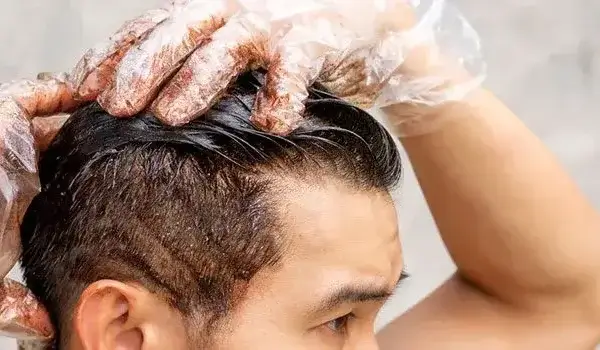The swelling problem is one of the most common side effects after a hair transplant. The problem of swelling after a hair transplant is significant. Swelling of the scalp, upper face, or eyes may occur.
Facial swelling is a natural result of a hair transplant. Rarely, this can be severe. Sometimes, bruises may occur on the eyelids of the patient. Oedema is a condition faced by more than half of the patients who have had a hair transplant, although it may feel unsettling and never go away. Oedema decreases on average in 3-5 days and completely disappears after a week.
During a hair transplant, microchannels are opened on the scalp for hair transfer. Hair follicles are transferred one by one into these opened microchannels. Although the procedure is minimal, it will still be a trauma for the scalp. The body develops a defence mechanism against this trauma. This defence mechanism is swelling.
The isotonic liquid given from the scalp starts to descend towards the forehead 2-3 days after the procedure, and the face area swells. In addition, swelling is reduced by applying ice packs to the forehead and face area. Oedema can be reduced by applying ice packs repeatedly every two hours.
What Causes Swelling After Hair Transplant?
Swelling after a hair transplant is standard, and swelling may go down to the face area within a few days after the operation. The main reason for this is the saline liquid and anaesthetic drugs injected into the lower layer of the skin so that the grooving and hair follicle placement can be done more efficiently.
Saline is sterile, physiological saline water compatible with the body, known as serum. This fluid, which is injected during the hair transplant operation, provides stretching of the epidermis area. The area to be treated is embossed so that one of the most critical stages of hair transplant, grooving and placing the hair follicles one by one, can be done much more accessible. Anaesthetic drugs injected to ensure the completion of the operation painlessly are also among the causes of swelling and oedema. Although swelling after a hair transplant is normal to a certain extent, facial swelling is more than expected and disturbing in some patients.
You aren’t listening enough after the operation, causing this fluid to descend to the forehead and face in the form of oedema. Squinting and swelling of the eyes may occur. A slight increase in pain may occur. Leaning forward frequently is another reason that increases facial swelling after a hair transplant. After the hair transplant operation, you should not be in positions that will force the body. Also, smoking or alcohol use and malnutrition increase existing oedema and prevent it from being eliminated from the body.
The formation and amount of swelling also vary according to the metabolic structure of the patient. While some people don’t have any swelling, some realize that it is rapidly descending towards their face in sensitive skin structures from the first days. However, there are still some practical measures that can prevent the formation of facial swelling after hair transplantation.
How to Prevent Swelling After Hair Transplant?
To prevent swelling after the hair transplant Turkey operation, you have essential responsibilities after the operation:
- Follow the doctor’s recommendations and recommendations regarding nutrition and rest.
- Don’t forget to wear the forehead bands given to you after the procedure. Thus, you will prevent the swelling from going down. During this process, be very careful not to touch the hair follicles in the forehead area.
- Evaluate the 3-4 day rest period by its purpose. Take care to stay rested even if you don’t feel tired or unwell.
- Take care that your resting position after the operation isn’t more vertical or horizontal than necessary. Sleeping or resting at a 45-degree angle with high pillows will help relieve oedema from the nape area.
- Ventilate your environment frequently, drink plenty of water, and prevent swelling by removing oedema.
How Many Days Does the Swelling Go?
Usually, these swellings disappear on their own in about one week. These fluids are excreted from the body in urine through the kidneys by joining the body’s circulation. In addition, local anaesthetic fluids given to numb the planting area other than saline may also cause swelling.
Swelling after a hair transplant is a common situation. However, suppose this situation isn’t explained adequately by the doctor or clinic staff who will perform the hair transplant operation. In that case, the transplanted person thinks that this swelling is an abnormal situation and is worried.
Are you want to get detailed information? You can click https://clinicmono.com/hair-transplant-turkey to get a visit.











